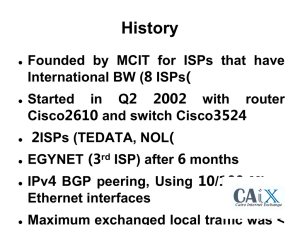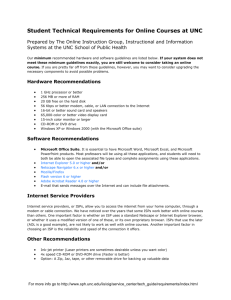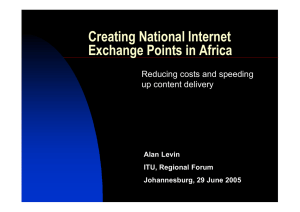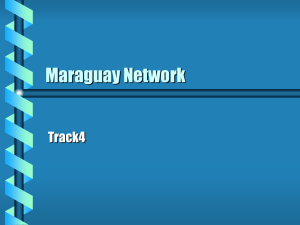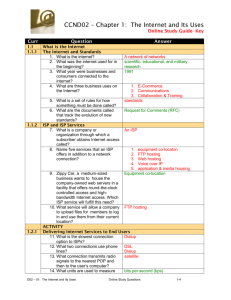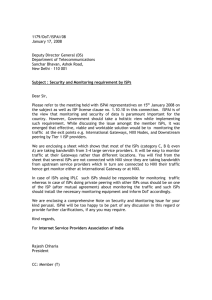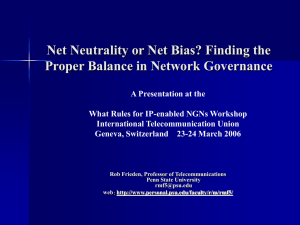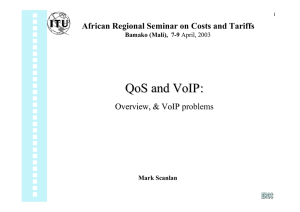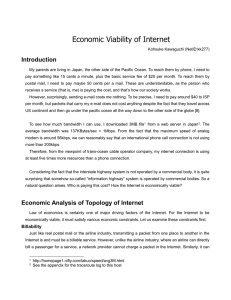Quantifying_the_Causes_of_Path_Inflation
advertisement
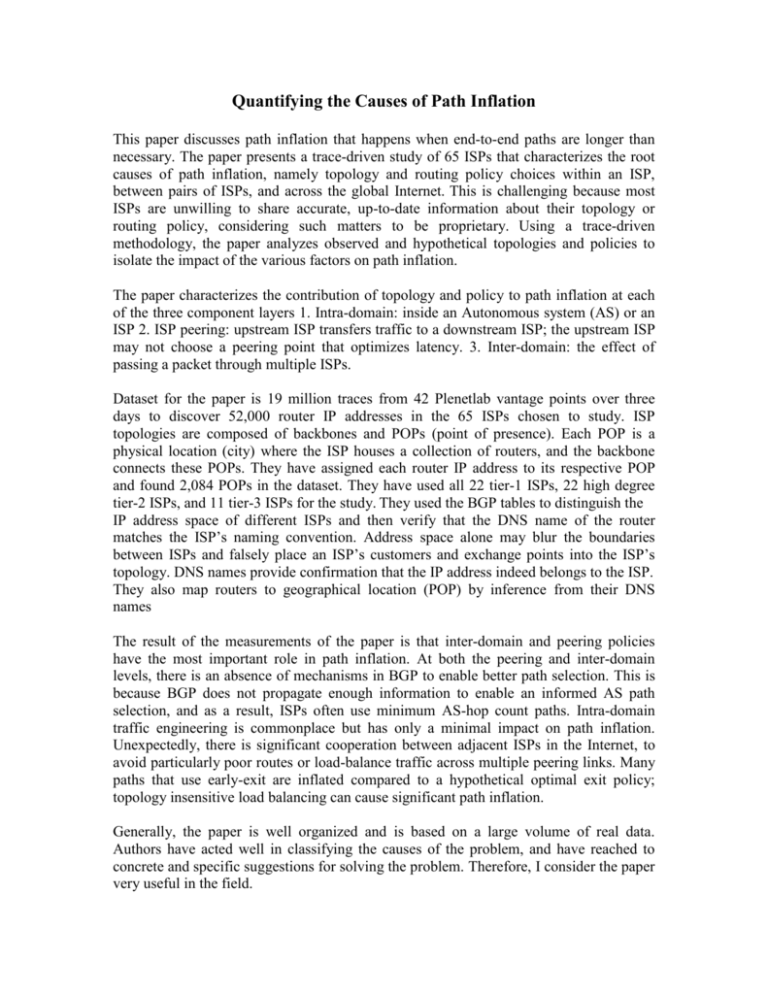
Quantifying the Causes of Path Inflation This paper discusses path inflation that happens when end-to-end paths are longer than necessary. The paper presents a trace-driven study of 65 ISPs that characterizes the root causes of path inflation, namely topology and routing policy choices within an ISP, between pairs of ISPs, and across the global Internet. This is challenging because most ISPs are unwilling to share accurate, up-to-date information about their topology or routing policy, considering such matters to be proprietary. Using a trace-driven methodology, the paper analyzes observed and hypothetical topologies and policies to isolate the impact of the various factors on path inflation. The paper characterizes the contribution of topology and policy to path inflation at each of the three component layers 1. Intra-domain: inside an Autonomous system (AS) or an ISP 2. ISP peering: upstream ISP transfers traffic to a downstream ISP; the upstream ISP may not choose a peering point that optimizes latency. 3. Inter-domain: the effect of passing a packet through multiple ISPs. Dataset for the paper is 19 million traces from 42 Plenetlab vantage points over three days to discover 52,000 router IP addresses in the 65 ISPs chosen to study. ISP topologies are composed of backbones and POPs (point of presence). Each POP is a physical location (city) where the ISP houses a collection of routers, and the backbone connects these POPs. They have assigned each router IP address to its respective POP and found 2,084 POPs in the dataset. They have used all 22 tier-1 ISPs, 22 high degree tier-2 ISPs, and 11 tier-3 ISPs for the study. They used the BGP tables to distinguish the IP address space of different ISPs and then verify that the DNS name of the router matches the ISP’s naming convention. Address space alone may blur the boundaries between ISPs and falsely place an ISP’s customers and exchange points into the ISP’s topology. DNS names provide confirmation that the IP address indeed belongs to the ISP. They also map routers to geographical location (POP) by inference from their DNS names The result of the measurements of the paper is that inter-domain and peering policies have the most important role in path inflation. At both the peering and inter-domain levels, there is an absence of mechanisms in BGP to enable better path selection. This is because BGP does not propagate enough information to enable an informed AS path selection, and as a result, ISPs often use minimum AS-hop count paths. Intra-domain traffic engineering is commonplace but has only a minimal impact on path inflation. Unexpectedly, there is significant cooperation between adjacent ISPs in the Internet, to avoid particularly poor routes or load-balance traffic across multiple peering links. Many paths that use early-exit are inflated compared to a hypothetical optimal exit policy; topology insensitive load balancing can cause significant path inflation. Generally, the paper is well organized and is based on a large volume of real data. Authors have acted well in classifying the causes of the problem, and have reached to concrete and specific suggestions for solving the problem. Therefore, I consider the paper very useful in the field.
